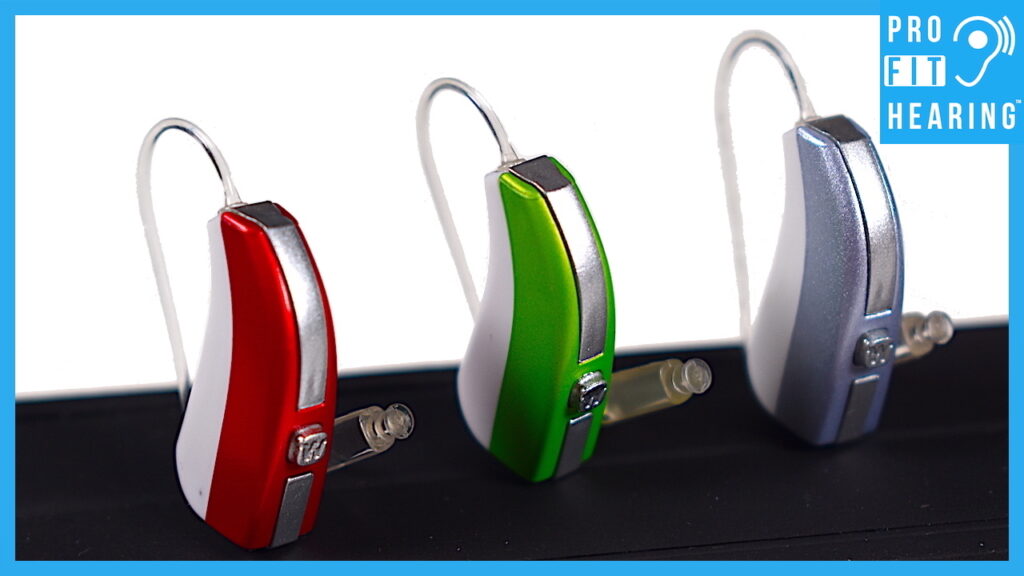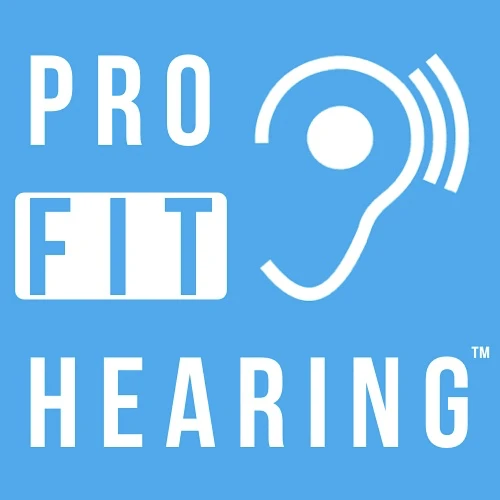Top 10 HIGH TECH Hearing Aid Features

Top 10 HIGH TECH Hearing Aid Features
Is a hearing aid right for you? Well, in this post I’m talking about the top 10 hearing aid features.
SUBSCRIBE to our YouTube channel for weekly videos!
Hi, I’m Dr. Derek – audiologist, audio engineer, and musician with ProFitHearing.com bringing you the best insight in today’s latest hearing aids, headphones, and audio technology to improve your life. If you have concerns about your hearing, always consult with your local physician or audiologist.
If you’re interested in hearing aids, check out my free eBook HERE.
Hearing Aid Features
Today, I’m talking about the top 10 features of today’s best hearing aids. When someone says hearing aids what do you think of? A big bulky piece of plastic behind your ear that doesn’t stop whistling? Well, maybe that’s something you had seen with your parents or grandparents, but today hearing aids are high-tech miniaturized computers that transform the lives of people who wear them.
Today’s hearing aids are precisely tuned to your degree of hearing loss. The technology has advanced drastically. We’ve gone from a very basic hearing aid that was adjusted with just a tiny screwdriver to today’s high-tech, smart hearing aids that have features like artificial intelligence AI, activity sensors, wireless connectivity, and smartphone integration. These technological changes have really transformed what a hearing aid is and are revolutionizing the hearing healthcare industry. There’s really never been a better time to try hearing aids.
#1 Digital Hearing Aids
Hearing aids today are digital. This means that they have a computer chip that transforms all sound into data points of 1s and 0s. This is a language that computers understand. The digital coding of sound allows for a very accurate adjustment of the hearing aid to accommodate the user’s hearing loss. The hearing aid is digitally programmed to provide more volume for the exact sounds that the person cannot hear. This custom tuning is based upon all the results from the audiogram or hearing test.
#2 Fast Processing
The computer chip in your hearing aid makes nearly instantaneous decisions on how to change sound in a way that sounds the best to your ears. Hearing aids constantly listen to all sounds around you and decide how to automatically filter out noise and maximize speech understanding and clarity. Older hearing aids required a manual adjustment by the user to filter out background noises, but now all of this happens behind the scenes. Hearing aids today have multiple settings that automatically switch on or off depending on the sounds in your environment. This will allow you to maximize your ability to understand speech.
#3 Noise Cancelling
A hearing aid automatically reduces some of the background noise in your environment in two ways. First, multiple microphones in the hearing aid work together to focus on the sounds that are in front of the person while reducing sensitivity to sounds from the side and back. Also, low frequency or bass sounds are reduced to remove additional noise, so that important speech sounds can be emphasized. Some hearing aids today automatically determine where speech is coming from and then redirect the microphone sensitivity toward the speaker no matter if they’re beside you or behind you.
#4 Compact Size
Hearing aids today provide more features in a more compact and discreet casing than ever before. One of the most popular styles is a miniature behind-the-ear or BTE hearing aid style. This rests behind your ear and under your hair. A small tube or wire is inserted into the ear to deliver sound. Another option is a small hearing aid that is custom molded to fit inside the ear. Some of the smallest hearing aids are the completely-in-canal or CIC and the invisible-in-canal IIC hearing aid. These two smallest hearing aids are more limited in how the user can adjust them, and they’re more likely to need extra care and attention for cleaning. But, their tiny size makes them very popular for those who are concerned with appearance and it might be an appropriate solution for you.
#5 Improve Sound Quality for Music
Hearing aids can have a setting especially for music that engages automatically or is manually activated by the user. These settings allow for more natural, less processed sound quality. Music sounds better with today’s hearing aids due to an extended dynamic range, an extended frequency response, and surround sound microphone settings. Historically, hearing aids have been focused on speech frequency sounds to maximize speech understanding. Hearing aid users can now enjoy music while better understanding the conversations around them.
#6 Out-of-the-Box Hearing Aid Fitting
This is one of the most amazing things about today’s hearing aids depending on your level of hearing loss. It’s possible to have your hearing tested and be fit with new custom tuned hearing aids on the same day. It’s called an open fit hearing aid. The hearing aid itself sits behind your ear, and it has a small wire with a plastic ear tip that sends sounds down into the ear canal. These hearing aids can be stored in a clinic for demonstration purposes and then quickly adjusted to fit a person’s hearing loss. The sound quality of an open fit hearing aid is often easier to adapt to since it doesn’t require any custom ear molds.
#7 Direct TV Connection
Hearing the TV clearly is a top concern for many patients. There’s many wireless headphone systems on the market today, however if you have a hearing aid that connects directly to television this will provide superior sound quality. This requires a small box that connects to the TV, and then that box transmits sounds out to the hearing aid. Some models of these TV hearing devices use a necklace device or something that clips to the shirt to send sound to the hearing aids. Whatever device your hearing aids support, ask your provider about this exciting technology.
#8 Phone Calls
Streaming hearing on the phone can be difficult if you have hearing loss, but many hearing aids today have Bluetooth technology. This allows you to connect your hearing aids to a cell phone with either a neck worn or clip-on adapter. Some hearing aids connect to cell phones directly. This technology will allow you to hear the phone in both ears while being able to have your cell phone sit on the table. Hearing the phone call on both ears can make speech understanding much easier. There’s also wireless landline phones that can stream the sound to the hearing aids. Using hearing aids and phones together used to cause a lot of whistling, however this new streaming technology will eliminate that problem and greatly improve sound quality.
#9 Connect to your Smartphone, Tablet, or Computer
In addition to cell phone streaming, some hearing aids today allow you to stream sounds via Bluetooth from your smartphone, tablet, or computer. This can include music, movies, or sounds from any app on your device. Sounds that are streamed from these devices are customized to the user’s hearing loss, so they’ll be able to hear their very best. This technology effectively transforms hearing aids into customized Bluetooth headphones.
#10 Internet Connectivity and Artificial Intelligence
A new technology is smart hearing aids that connects you with other devices in your home. Something called If This Then That technology allows the user to have an alert sound in their hearing aids when something happens at home such as if somebody rings your doorbell or if a security alarm sounds. Artificial intelligence is beginning to be used in hearing aids to make more decisions on how to best modify sound to help the hearing aid user hear their best. Integrated sensor technology is also being introduced into hearing aids to track the hearing aid user’s activities similar to a smart watch device on the market.
High Tech Hearing Aid Features
Now, when somebody says hearing aids you should think about quick customization, connectivity to Bluetooth devices, and cutting edge technology like artificial intelligence. These top features of today’s best hearing aids have really revolutionized what a hearing aid can do and can absolutely change your life for the better.
Consult with your local audiologist to see if hearing aids might be appropriate for you. If you received value from this post, go to https://www.youtube.com/profithearing and check out all the videos on our YouTube channel.
-Dr. Derek
